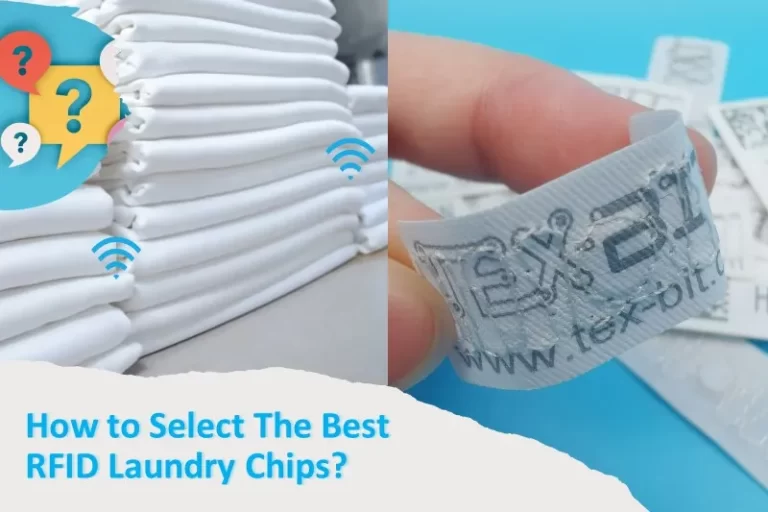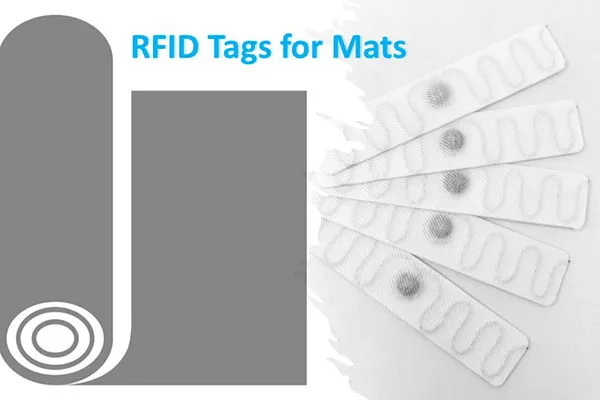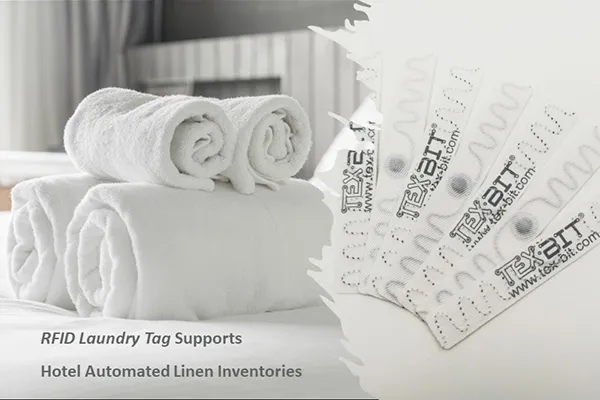The use of UHF RFID laundry tags to help uniform rental operations and clients control costs is becoming more common across all industries.
RFID technology is smoothing the way for uniform management in healthcare facilities, with some hospitals across Europe deciding to use smart cabinets or room-based solutions to manage scrubs and workwear. We have seen a dramatic shift from high-maintenance systems such as conveyor solutions to automated RFID solutions.
Uniform Management without RFID
In Venne, Niedersachsen, Germany, Ulrike Caselato’s nursing home, relies on manageable processes and controlled quality of cleaning. She prefers small local laundries to large, well-known service providers, but laundry inventory is almost always a problem. In this industry, it’s normal to have some turnover of employees. In the past, workwear would sometimes leave the company with the employees. Some team members may have also washed their uniforms at home, which of course is not allowed for hygiene reasons. It was almost impossible to prevent this from happening, as the workwear could not be clearly assigned to the appropriate employee in terms of organization. After about a year or so, the firm had to buy work clothes again – more than would be expected under normal and expected usage. This is a complex and unfortunately also an expensive issue.
The Benefits of RFID Tracking for Uniform Management
Industrial laundries specializing in the maintenance and rental of uniforms for a wide range of industries including medical, hospitality, manufacturing, and emergency services. These laundries employ specialized washing programs tailored to the specific textile needs of their client’s uniforms. Maintaining the integrity and longevity of workwear through proper cleaning methods is critical, especially for personal protective clothing required to meet safety regulations.
RFID (radio frequency identification) technology is transforming workflow efficiency and accountability within the industrial laundry industry. Tiny RFID tags sewn into or attached to each garment enable precise tracking of uniforms through the washing process. Automated RFID readers stationed at key checkpoints in the plant can instantly identify and log each item of clothing. This creates a detailed digital trail documenting the cleaning process for every garment. Here are 4 reasons to track uniforms with RFID:
1, Streamlined Laundry Workflow and Inventory Control
RFID easily tracks the collection of dirty laundry and delivery of clean uniforms, providing transparency for customers and laundries. Globally, this data capture technology enables real-time visibility into circulating and non-circulating wash processes.
When soiled uniforms arrive at the laundry, fixed RFID portals or handheld readers scan them, recording each garment in a database. Meanwhile, all delivered clean uniforms are scanned on their way out.
RFID readers detect bag contents in seconds without manual sorting. This eliminates visual identification and speeds up processing. Automated tracking via fixed readers at key points further improves efficiency.
2, Visibility on Cost Savings
Lost uniforms represent huge costs for laundries. RFID tracking provides insight into a garment’s history, facilitating research into losses. Finding misplaced items in lockers, stockrooms, buildings, and beyond is simplified.
3, Understanding Uniform Lifecycles
With RFID data on uniform lifecycles, organizations can grasp normal wear patterns and predict replacement needs. Comparing lifespans by garment type helps determine where costs can be reduced, lowering capital expenditures and improving ROI.
4, Ensuring Correct Garment Care
The database provides location data and care instructions. For example, if a wash station reader detects dry-clean-only items, the system can flag improper processing. This ensures suitable washing and drying, extending garment life and reducing waste.
RFID Uniform Management Cases
Each piece of clothing for Caselato’s care team is now equipped with a UHF RFID laundry tag, in conjunction with a smart clothing distribution and return cabinet, which can be assigned to the appropriate wearer in the laundry management system. Each employee must register with their own contactless ID card before removing their workwear in order to open the distribution cabinet and register exactly what is being removed. The used workwear recycling station is also equipped with a UHF reader that identifies which employee is currently using which garments? What is the current cleaning cycle? Which janitor last wore the torn clothing? Who is hoarding or even stealing work clothes? Are departing employees also returning everything? Which clothing is used more frequently? What quantities and combinations are really needed? All questions that the system can find answers to with its continuous real-time inventory. What about other industries?
According to a recent report by The Caterer, a UK hospitality trade journal and website. In the UK, Elis recently signed a contract with pub giant Mitchells & Butlers that covers the supply and processing of RFID, More than 375,000 items, including tables, linens, and chef’s whites/kitchen cloths, are shipped to its more than 800 sites with the ability to deliver new inventory within three weeks. Elis will operate the company through its 43 facilities nationwide using a fleet of more than 670 vehicles. All items are tracked via RFID, giving Elis complete visibility into their usage and location, and providing better inventory control.
RFID linen tag is installed in every item of clothing. With the help of laundry RFID software tagging linen and managing linen data, each garment is recorded at receiving and logged in RFID system. In combination with the storage management module and the integrated ordering system, a complete overview of all areas of the laundry is available.
Especially, in the restaurant business, we were able to achieve considerable benefits by scanning in the goods-in and goods-out. We now know where our linen is. Thus inventory and costs can be reduced.
TEX-BIT UHF RFID Laundry Tag
Our RFID linen tag is a soft, thin, flexible but durable tag, with stable and consistent performance up to 7 meters read range, accompany with adherent assets, sustaining in harsh industrial laundry processes by 200 cycles for the lifespan of the textile asset. Stitched, pocketed, or heat sealed imperceptibly installation on textile, TBIL serial laundry tag can fit almost all kinds of fabric textile asset, and had been passed the SGS certification of heating and bending test.
But RFID tags are not just for uniforms – learn about their other business areas here.
Want to learn more or have questions about RFID for uniform tracking? Get in touch with us.




